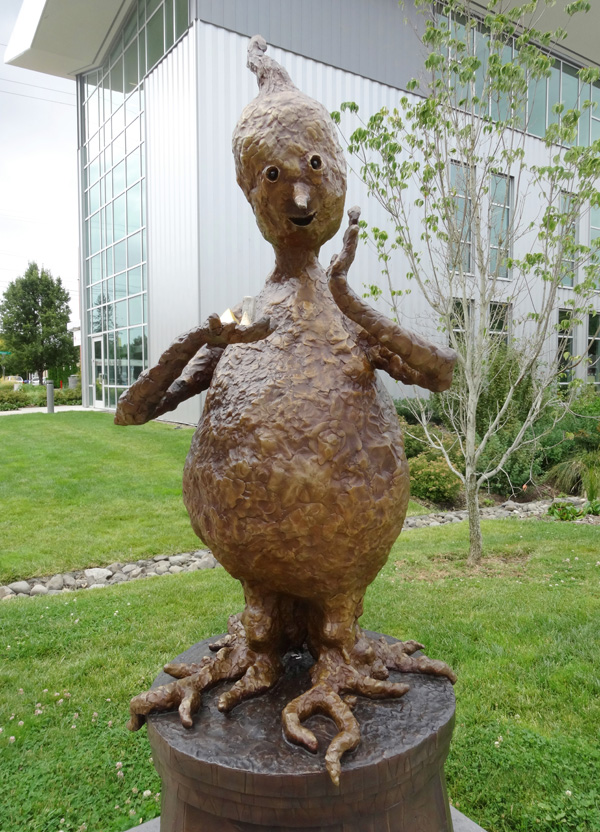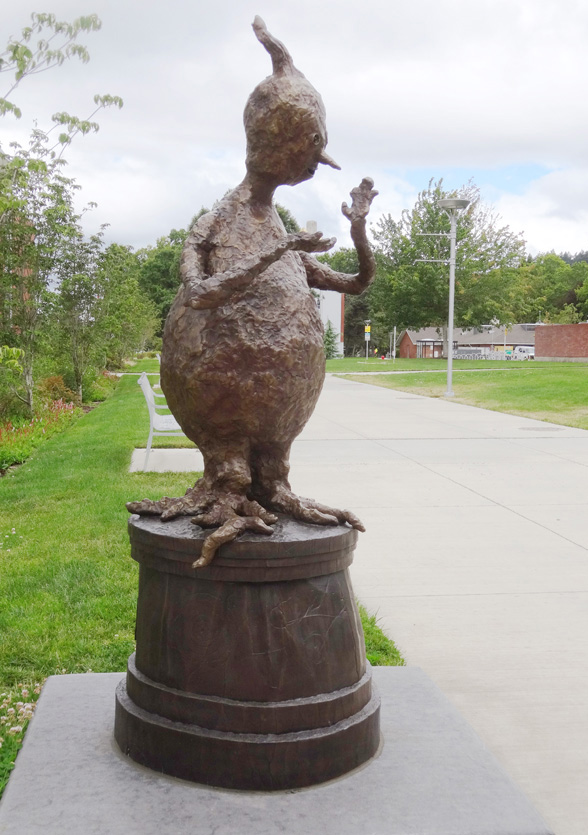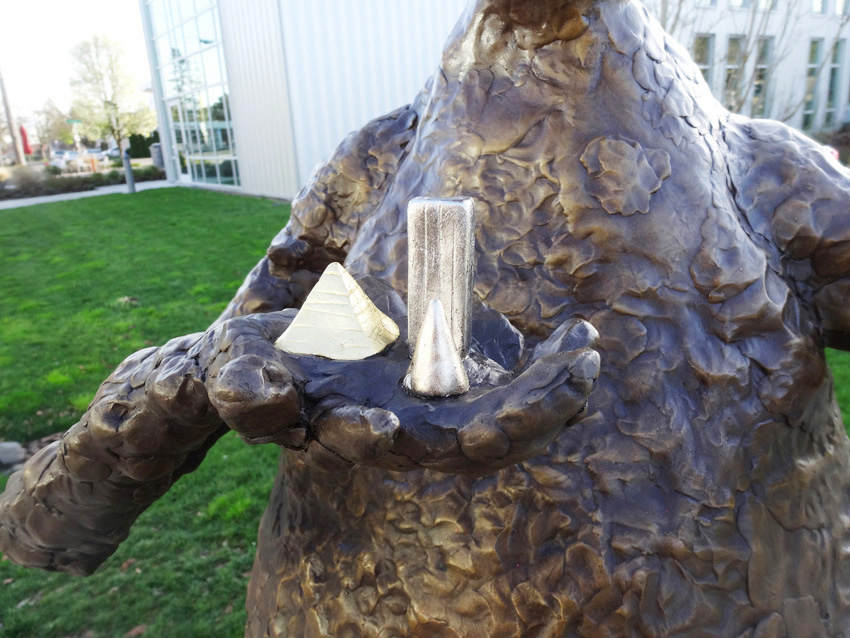 |
|
 |
The
Story of The Grand
Calabash
The Grand
Calabash is a well-wisher that was inspired by observations made while
researching the history of Portland Community College’s SE Campus
location.
Specifically I became interested in an old cistern, an altar left
behind in a
Chinese restaurant, and also the present-day incarnation of this site
as an
institute of higher education. What
I see
in common with all of these is a shared desire for good fortune,
abundance, health,
and prosperity.
An altar to
the God of Earth is an artifact left over from the expansive Legin
Restaurant,
and is now on display in the PCC library. Within the altar one can see
a small
gourd depicted on the central gold vessel. The gourd, with its
humorously fertile
shape, represents happiness, success, and refreshment to people across
many
societies, and is commonly associated with good health and well-being.
While
excavating the restaurant site, a plaster and brick lined cistern was
revealed
from this location’s earlier use as home to a German community. After
the
cistern had stopped functioning as a water reservoir, it was used to
incinerate
waste; consequently objects that did not burn remained intact,
including
numerous bottles and horseshoes. The horseshoes symbolize good luck in
various cultures
and plenty were found right here. Bottles are based on the gourd for
both shape
and function, and several bottles found here had auspicious names
(Golden
Wedding) while others were of a healthful or medicinal nature (Milk of
Magnesia).
Geometric
shapes in the figure’s hand signify mathematics, geometry, and
architecture as
well as artistic training. Native Americans inhabited this area long
before the
Europeans arrived, and the cone alludes to their presence although
local tribes
mostly lived in wooden lodges, so the cone is an oblique association
here. This
type of conical shelter is used by other cultures around the world, and
the
pyramidal and cuboid structures are familiar forms as well.
The base is a
stylized tree stump that speaks to the resources used as the foundation
to
further the development of knowledge and progress, and is ornamented
with hand
drawn symbols relating to science and education. The proportions of the
base were
calculated using the golden mean, and these formal design elements
offer a
counterpoint to the looser overall structure of the surface treatment
of the
sculpture.
The Portland
Community College campus that is now here was constructed to offer a
place for
learning, to conduct educational research, and provide instruction to
individuals from diverse backgrounds, offering multiple pathways to
success and
prosperity to the Southeast Portland community.

